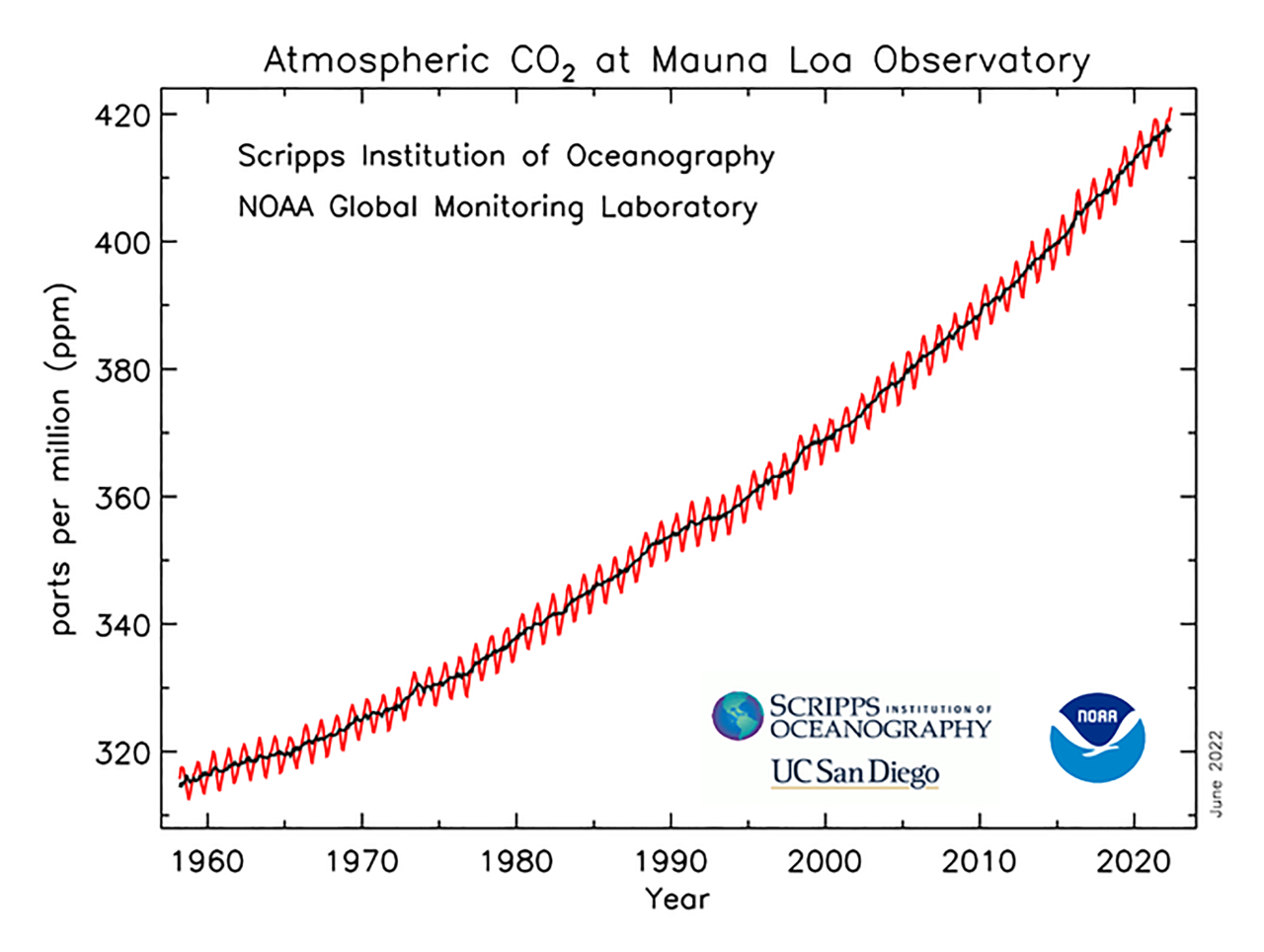On the Big Island of Hawaii, high on the slopes of the Mauna Loa volcano is an observatory that can measure air samples undisturbed by local pollution or vegetation.
The observatory recorded new measurements of peak atmospheric carbon dioxide - 421 parts per million - a continued increase from last year. That means for every 1 million molecules of gas, 421 were carbon dioxide in the atmosphere.

The National Oceanic and Atmospheric Administration announced the findings this week that the measurement is more than 50% higher than pre-industrial levels. The increase is sited as the result of an output of the gas from human behavior like burning fossil fuels and deforestation. Carbon dioxide levels this high are comparable to the Pliocene, between 4.1 and 4.5 million years ago, before human existence.
See Related: There is more CO2 in the atmosphere today than any point since the evolution of humans
CO2 in the atmosphere traps heat radiating from the planet’s surface causing warming. Consequences include weather impacts like extreme heat, drought, and tropical storm activity.
“We can see the impacts of climate change around us every day. The relentless increase of carbon dioxide measured at Mauna Loa is a stark reminder that we need to take urgent, serious steps to become a more climate ready nation.”
- NOAA Administrator Rick Spinrad, Ph.D
Read more from NOAA here.
See Related: Warming environmental conditions to continue





